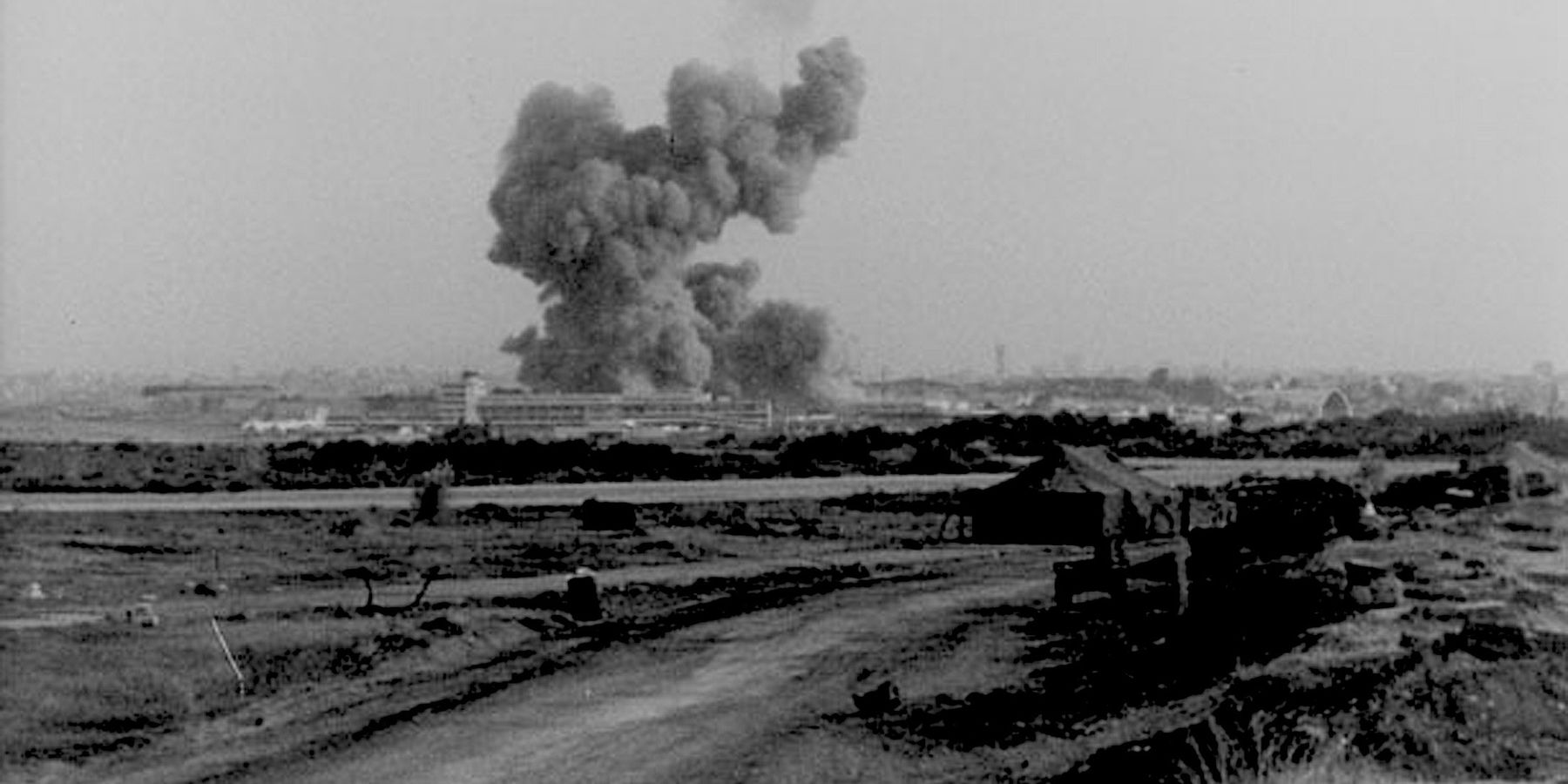Israeli Prime Minister Benjamin Netanyahu’s goal of ensnaring the United States in a wider Middle East war is already partly realized. Earlier this month, U.S. forces were directly engaged for the second time this year in shooting down missiles that Iran had fired in retaliation for Israeli attacks on Iranian interests.
The United States also has been attacking targets in Yemen, even with long-range B-2 heavy bombers. The combat with Yemen, like the exchanges of fire with Iran, is a direct outgrowth of Israel’s policies of subjugation of Palestinians and carnage in the Gaza Strip after Hamas’ October 7 attack.
One of the most recent expansions of U.S. involvement in Israel’s wars has been the deployment to Israel of the THAAD missile defense system, along with about 100 U.S. military personnel to operate it. Such deployments not only put Americans increasingly in harm’s way but also embolden Netanyahu to escalate his wars further by reducing the impact of the inevitable retaliation from those whom Israel attacks.
With no end in sight to the Israeli escalation, and with that escalation focusing in recent weeks on an Israeli assault in Lebanon that has begun to duplicate some of the suffering in Gaza, Americans should reflect on how the United States got ensnared in an earlier Israeli war there, and a tragic result of that involvement that occurred 41 years ago this week.
Israel invaded Lebanon in 1982, which was the beginning of an occupation that would not end completely until 2000. That Israeli invasion of Lebanon, like the current one, was directly related to the same Israeli policy of bashing and subjugating the Palestinians. Israel’s chief objective in 1982 was to destroy the capabilities, resident in Lebanon at the time, of the Palestine Liberation Organization, and to drive the PLO out of the Levant. Israel also sought to tip the balance of forces within Lebanon — which had already been engulfed in civil war — toward ones partial to Israel.
The Israeli invasion and occupation substantially increased the suffering of Lebanese as well as Palestinian refugees there. One of the most horrifying low points was the massacre in September 1982 at the Sabra and Shatila refugee camps. Phalange militiamen slaughtered an estimated 3,000 civilians while the Phalange’s ally, the Israel Defense Forces, fired illuminating flares so that the killing could continue through the night.
A couple of weeks earlier, the United States under the Reagan administration had agreed to deploy U.S. Marines, alongside small military contingents from France, Britain, and Italy, as part of a multinational force in Lebanon. At least on the face of it, this deployment had a noble peacekeeping mission of quelling the violence in Lebanon. But Lebanese and other observers had reason to perceive the U.S. action as a weighing in on the side of Israel and the internal political forces it favored.
In addition to the background of the overall U.S.-Israeli relationship, the principal accomplishment of the multinational force was to facilitate the exit of the PLO from Lebanon, which was part of Israel’s objective in invading Lebanon in the first place.
Besides, as with other deployments of U.S. military personnel to already dangerous places, the lethal logic of force protection kicked in, and peacekeeping morphed into offensive action. President Reagan authorized “aggressive self-defense” against hostile forces that posed a threat to the Marines, with those same hostile forces also being adversaries of Israel and its Lebanese militia allies. The U.S. engagement on the ground was supported by naval gunfire, which would later include the battleship New Jersey firing 16-inch shells at targets in the mountains near Beirut.
All this was in addition to the usual loathing by domestic elements of any foreign military presence, which at other times and places has fed violent responses, including suicide terrorism.
The deadliest response to what the United States was doing in Lebanon came on October 23, 1983, when a suicide driver drove an explosives-laden truck into the building at the Beirut airport the Marines used as a barracks. The detonation of the truck bomb killed 220 Marines plus 21 other U.S. military personnel. It was the deadliest day for the U.S. Marine Corps since the battle of Iwo Jima in World War II and the highest single-day death toll for the U.S. military as a whole since the opening day of the Tet offensive in Vietnam in 1968.
It is legitimate to argue that this high price was incurred in vain. The United States withdrew its forces, and the multinational force was dissolved a few months later, while the Lebanese civil war continued until 1990, and the Israeli occupation of parts of Lebanon would continue for 10 more years after that.
Responsibility for the bombing was claimed in the name of Islamic Jihad, which was later generally understood to be Lebanese Shia elements that would coalesce into what is now known as Hezbollah.
Hezbollah owed its origin and early rise in the 1980s to its stout opposition to the Israeli invasion and occupation. It has never looked to pick fights with the United States based on some al-Qaida-like transnational ideology. It has been sharply focused on its objectives of gaining and maintaining political power in Lebanon, defending the interests of Lebanese Shia, and defending Lebanon as a whole against Israeli depredations.
The overseas operations of Hezbollah have grown out of those objectives. These include two bombings of Israeli or Jewish interests in Buenos Aires, each of which was retaliation for Israeli attacks back in the Middle East, and Hezbollah’s support for its local ally, the Assad regime in Syria. The one attack on U.S. interests that may seem removed from fighting in Lebanon and in which Hezbollah may have had an indirect role (by supporting like-minded Saudi elements) — the bombing at Khobar Towers in Saudi Arabia in 1996 — was again a matter of a resented U.S. military presence on foreign soil.
The bombing of the Marine barracks in 1983 was a direct result of the United States allowing itself to be sucked into involvement in one of Israel’s offensive wars. Without that involvement, the bombing never would have happened.
A similar price to be paid for the United States getting sucked into Israel’s current wars will not necessarily be paid within Lebanon. The battering that the Israeli offensive has inflicted on Hezbollah’s capabilities in Lebanon has probably not diminished its capability for asymmetric operations elsewhere. Its willingness to use that capability against U.S. interests grows to the extent that the United States allows itself to become associated with Israel’s lethal offensives and to the extent those offensives make parts of Lebanon similar to the ghastly rubble of Gaza.
- 42 years ago today: The Sabra & Shatila massacre ›
- Cut off the head, get another 'terrorist' ›
- Israel-Hezbollah ceasefire begins, but serious questions remain | Responsible Statecraft ›
















